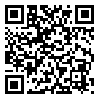BibTeX | RIS | EndNote | Medlars | ProCite | Reference Manager | RefWorks
Send citation to:
URL: http://jap.iums.ac.ir/article-1-5230-en.html
2- tabriz univarsity
3- iran university of medical science ,
Abstract: the aim of this study was comparing clinical variables to catastrophizing and fear of movement in subjects with secure attachment style, ambivalent and avoidant who have chronic- musculouskeletal pain. Method: In this method 150 subjects participated who were selected through the available participants of the Shohada, Emam Hossein and Sina hospitals in Tehran and they answered to the hazen and shaver attachment style questionnaire and catastrophizing and fear of movement. Data were analyzed using multivariate analysis of variance (MANOVA). Results: The results showed that through the 3 secure attachment styles, avoidant and ambivalent, the ambivalent style is the only that is related to catastrophizing and fear of movement. Conclusion: The people with ambivalent style, in the face of threats such as pain, can use emotion regulation, strategies with hyper- activating practiced and theoretical implications of the findings are discussed in details in the last section of the article.
Received: 2015.07.5 | Accepted: 2015.12.9 | Published: 2016.03.25
| Rights and permissions | |
 |
This work is licensed under a Creative Commons Attribution-NonCommercial 4.0 International License. |





